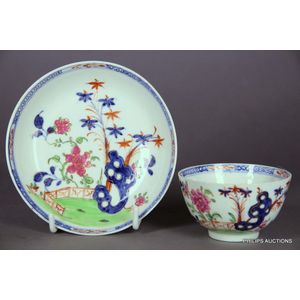Kakiemon Porcelain Plates Pair, Showa Period
You must be a subscriber, and be logged in to view price and dealer details.
Subscribe Now to view actual auction price for this item
When you subscribe, you have the option of setting the currency in which to display prices to $Au, $US, $NZ or Stg.
- Emeralds - Emeralds have been used in jewellery making for thousands of years, and are prized for their deep green colour, which is caused by the presence of chromium and vanadium in the mineral beryl. Because of their rare colour, emeralds are often more valuable than diamonds of a similar size and quality. In jewellery making, emeralds are typically cut into round or oval shapes to maximize their color and clarity. They are often set in gold or platinum and used as the centrepiece of a piece of jewellery, such as a ring or necklace. They can also be used in combination with other gems, such as diamonds, to create intricate and beautiful designs.
- Kakiemon Porcelain - Kakiemon porcelain was made from the 16th to the 19th century in the Arita area of Japan, and is generally agreed to include some of the finest porcelain made in Japan. It is decorated with polychrome enamels over glaze, the most popular colours being underglaze blue and enamels of green, blue, turquoise yellow and persimmon red.
The body of a Kakiemon object is pure white porcelain while the enamel overglaze motifs incorporate Japanese and Chinese designs, but leave much of the white surface unpainted. The name derives from the family of potters who are associated with this style of pottery.
Early Kakiemon porcelain was unmarked, and marks on later objects were variable and unreliable.
Kakiemon porcelain was first imported into Europe by the Dutch at the end of the 17th century, and became extremely popular, resulting in Kakiemon-style imitations being produced by European potteries including Bow, Chelsea and Worcester in England, Mennery, Samson and St. Cloud in France, Delft in Holland and Meissen in Germany.
It's rare for an original Kakiemon object to come onto the market, and almost all sold nowadays is of European origin, and described as Kakiemon pattern or Kakiemon style.
This item has been included into following indexes:
- Japanese ceramics, potters - Kakiemon 40
-
Satsuma (Japan), item type
- bowls 555
- boxes 111
- plates, platters and chargers 566
Visually similar items

A pair of Wedgwood porcelain cabinet plates with 'Australian Flora' back stamps, circa 1883 and 1884. 25 cm diameter

A Lowestoft tea bowl and saucer, circa 1780 decorated in the oriental rock, fence and peony 'Redgrave' pattern below a red and blue border, height 4.5 cm, (cup) Diameter 13 cm, (saucer)

A Spode floral-decorated plate and a matching side plate, circa 1810, decoration pattern 2248, each circular with a slightly indented edge, moulded floral decoration to the border and enamelled floral sprays to the centre and the border, gilt rims, painted

Four pieces of Wedgwood china including a vase & dishes
